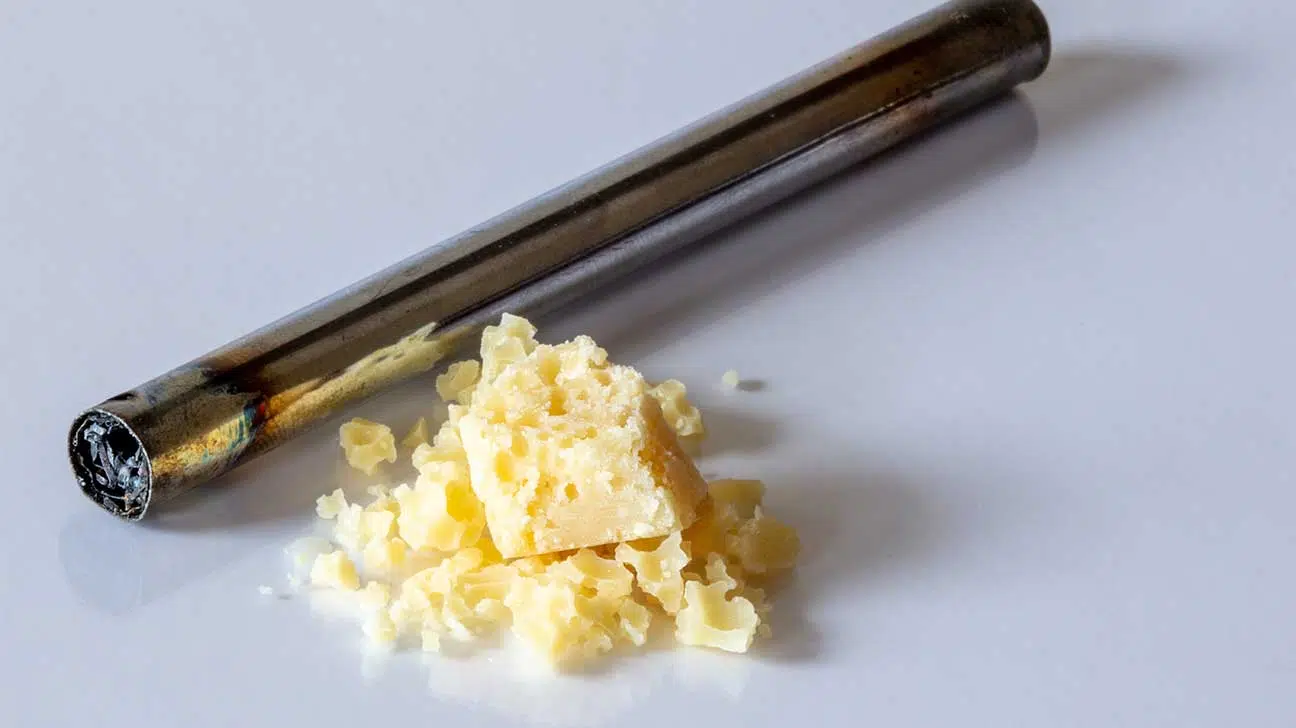How To Identify Crack: Look, Smell, Taste & Paraphernalia
Crack cocaine is a highly addictive drug that can be identified through several means. A person might identify crack through its rock-like appearance or paraphernalia, such as a pipe.

Both crack cocaine and powder cocaine come from the coca plant, which can be found in South America.
Both are highly addictive stimulant drugs that cause a euphoric high and several side effects. However, these two forms of cocaine may appear very different from one another.
In general, cocaine looks like a white powder that can be snorted, injected, or rubbed into the gums.
Crack cocaine contains baking soda and is prepared in a specific way. This preparation process gives it a specific appearance.
Because crack is a commonly abused form of cocaine, learning to identify it can help loved ones help their friends and family members who may be dealing with crack cocaine addiction.
Identifying Crack Cocaine
Crack cocaine may be identified through several factors. These factors include appearance, smell, and taste.
What Does Crack Look Like?
Crack cocaine looks like small, white “rocks” or pieces of wax. However, these small pieces may also be off-white if they contain any additives other than baking soda.
This appearance comes from the crack cooking process. While crack begins as powder cocaine, it is mixed with baking soda and water, and then it is boiled until it solidifies. Then, it can be broken into smaller pieces.
Crack cocaine may not appear in large quantities, as it is often bought in individual “bumps,” or doses.
Learn more about the appearance of crack cocaine.
What Does Crack Smell Like?
Crack cocaine does not have much of a smell when it is not being smoked. When crack is smoked, however, it can produce a strong smell.
People have compared the smell of crack to nail salons, gasoline, paint, plastic, or burning rubber.
The smell of crack cocaine may depend on the cocaine cutting agents included in the drug.
What Does Crack Taste Like?
Because crack cocaine is highly addictive and dangerous, you should not taste a substance that you believe may be crack.
However, before smoking crack, some people do taste it to determine the purity of cocaine. People have described the taste as bitter or similar to chemicals.
Crack may also have a slightly salty taste from the baking soda.
Crack Paraphernalia
Because crack is often sold in such small doses, it can be difficult to find it among a loved one’s possessions. Crack paraphernalia, however, may be found more easily.
While snorting is the most common way to consume powder cocaine, crack cocaine is usually smoked. Most crack paraphernalia makes the smoking process easier.
Glass pipes and lighters are common forms of crack paraphernalia. However, other forms of drug paraphernalia may indicate crack abuse.
These paraphernalia items include:
- aluminum foil
- spoons, especially with burn marks
- empty light bulbs, or light bulbs with burn marks
- straws (used to inhale smoke)
- soda cans with puncture marks
- hollow glass containers
- wire scrubbers and scouring pads (used as filters)
People who deal with substance abuse, including crack use, may use all sorts of household items as makeshift crack pipes and filters.
Burn marks are usually a telltale sign that these items have been repurposed for drug use.
Identifying Fake Crack Cocaine
Fake crack cocaine can be quite deceiving, as it shares a similar appearance to genuine crack cocaine. One of the main differences is that fake crack has a slightly lighter color.
Additionally, illegitimate crack cocaine might appear more powdery and smell much sweeter than real crack cocaine, which has a strong bitter smell.
Other Ways To Identify Crack Cocaine Addiction
Often, people with drug addictions go to great lengths to hide those addictions. That includes hiding any drugs and paraphernalia that they own.
Some people are better at hiding their drugs than others, which is why loved ones should look for more than the physical presence of drugs if they suspect that someone is using crack.
Additional signs of crack cocaine use may include mental, physical, and behavioral signs.
Many of the effects of crack are the same as the effects of cocaine in general, as crack and cocaine come from the same source.
Mental Health Signs Of Crack Use
In the short term, one of the more desirable effects of crack is a euphoric high. Crack cocaine increases dopamine, one of the brain’s main pleasure chemicals.
Somebody who has just used crack may appear especially happy, talkative, and social.
However, the length of a crack cocaine high is usually only a few minutes. Over time, as a person begins to depend on crack use, they may appear depressed when not using the drug.
Anxiety and paranoia are also common side effects of crack use. In some cases, people experience cocaine psychosis, which is a complete break from reality.
Physical Signs Of Crack Use
Crack abuse has many physical signs. Immediately after using crack, a person may feel a burst of physical energy.
However, after the high disappears, the same person may feel excessively fatigued and lethargic.
Other physical signs of crack cocaine use include:
- high blood pressure due to constricted blood vessels
- rapid heart rate
- elevated body temperature
- dry mouth and tooth decay
- dilated pupils
- extreme weight loss
- bloating, especially around the face
The more serious symptoms of crack addiction include heart attack, seizure, and stroke.
Behavioral Signs Of Crack Use
Many forms of substance use, including crack use, may lead to certain behavioral signs. These signs do not necessarily indicate crack cocaine use, specifically.
However, when a person exhibits several of these signs combined with the above mental and physical signs, that person may be dealing with crack addiction.
Some of these behavioral signs include:
- telling lies and keeping secrets
- social isolation
- leaving one friend group for another
- neglecting personal hygiene and healthcare
- neglecting responsibilities
- engaging in reckless behavior
- losing interest in old hobbies
- spending large amounts of money
Addiction Treatment For Crack Use
If you or a loved one are dealing with crack addiction, you have healthcare options that can help you recover.
Spring Hill Recovery Center offers several evidence-based addiction therapies for crack cocaine addiction. Our treatment programs include both inpatient and outpatient care.
We can help you to manage crack cocaine withdrawal symptoms with drug detox and supportive care as you transition into sobriety.
Contact Spring Hill Recovery Center today to learn how you can begin your addiction recovery journey.
- National Institute On Drug Abuse — Cocaine DrugFacts https://nida.nih.gov/publications/drugfacts/cocaine
- National Library Of Medicine — Cocaine https://medlineplus.gov/cocaine.html
- National Library Of Medicine — Crack Cocaine Use: A Review Of Prevalence And Adverse Effects https://pubmed.ncbi.nlm.nih.gov/2038981/
- National Library Of Medicine — Odor Impact Of Volatiles Emitted Marijuana, Cocaine, Heroin, And Their Surrogate Scents https://pubmed.ncbi.nlm.nih.gov/26958621/
- United States Department of Justice — Drug Paraphernalia Fast Facts https://www.justice.gov/archive/ndic/pubs6/6445/6445p.pdf


